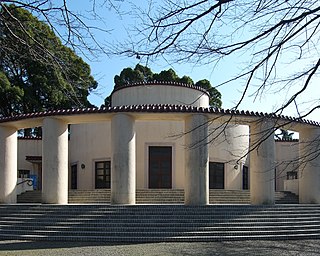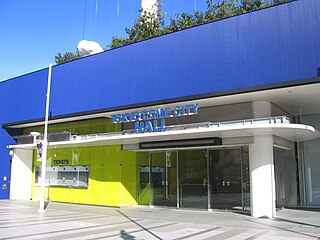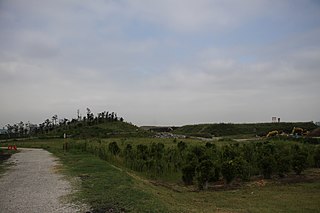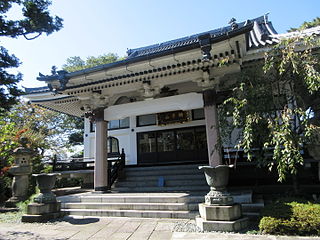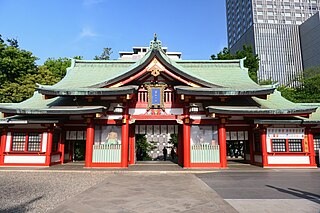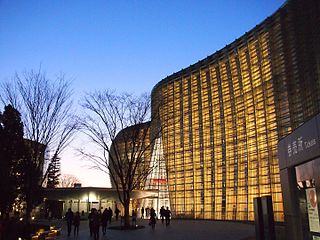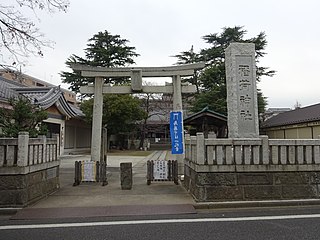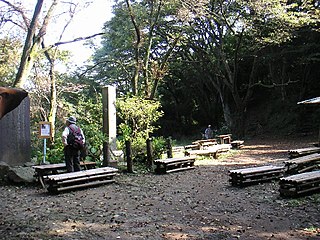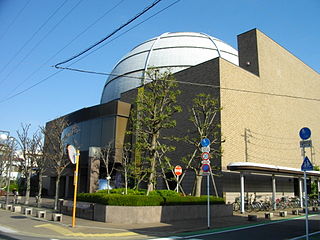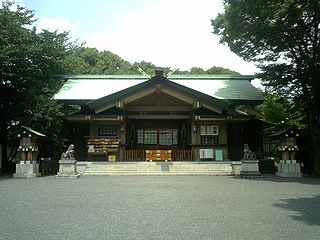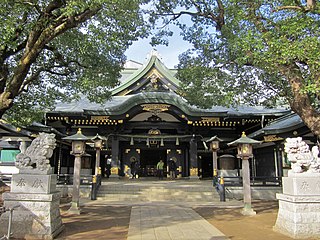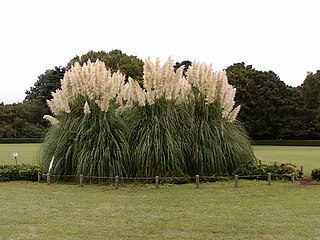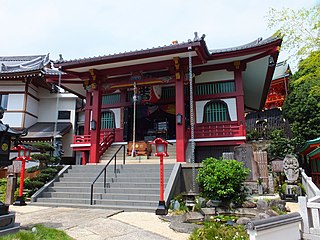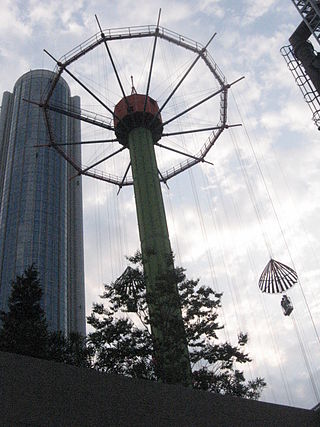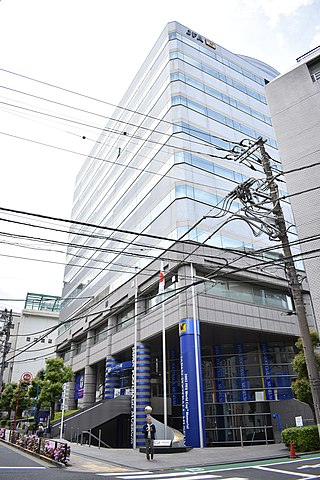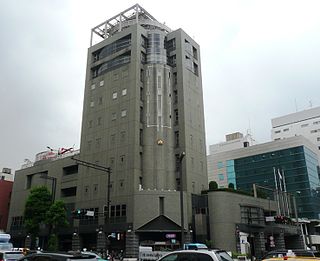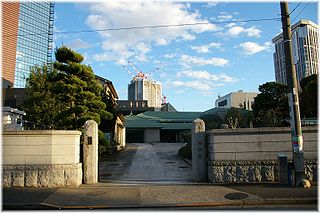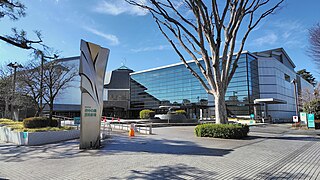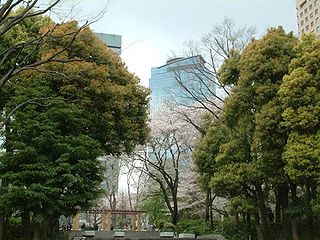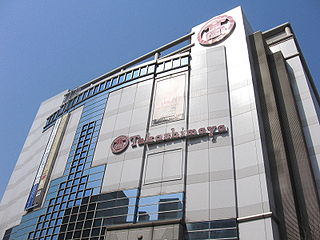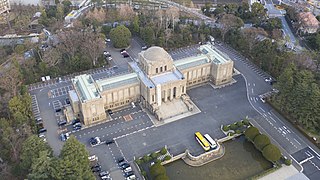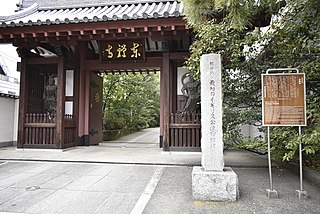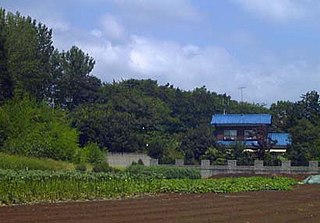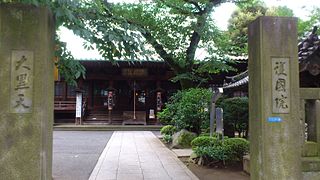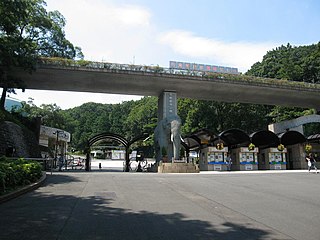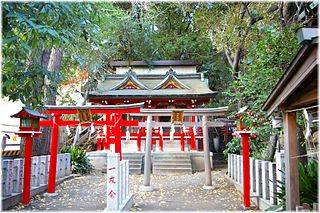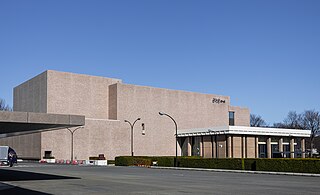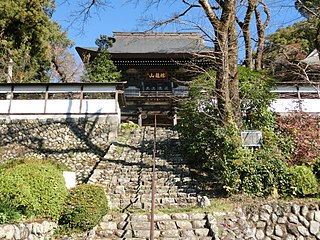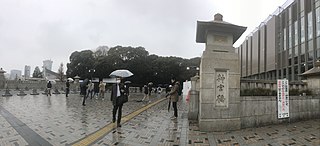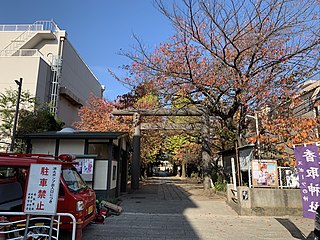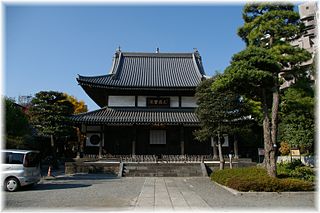100 Sights in Tokyo, Japan (with Map and Images)
Legend
Premium Sights
Book tickets, guided tours and activities in Tokyo.
Guided Free Walking Tours
Book free guided walking tours in Tokyo.
Welcome to your journey through the most beautiful sights in Tokyo, Japan! Whether you want to discover the city's historical treasures or experience its modern highlights, you'll find everything your heart desires here. Be inspired by our selection and plan your unforgettable adventure in Tokyo. Dive into the diversity of this fascinating city and discover everything it has to offer.
Sightseeing Tours in TokyoActivities in TokyoOdaiba (お台場) is a large artificial island in Tokyo Bay, Japan, across the Rainbow Bridge from central Tokyo. Odaiba was initially built for defensive purposes in the 1850s. The land was dramatically expanded during the late 20th century as a seaport district, and was redeveloped in the 1990s into a major commercial, residential and leisure area. Odaiba, along with Minato Mirai 21 in Yokohama, is one of the few manmade seashores in Tokyo Bay where the waterfront is accessible and not blocked by industry and harbor areas.
Meiji Shrine is a Shinto shrine in Shibuya, Tokyo, that is dedicated to the deified spirits of Emperor Meiji and his wife, Empress Shōken. The shrine does not contain the emperor's grave, which is located at Fushimi-momoyama, south of Kyoto.

Hachiman Shrine is a shrine located in Toranomon, Minato-ku, Tokyo. Usually, for the sake of distinguishing it from others, it is called Nishikubo Hachiman Shrine with the old place name. Rarely, it is also called Iikura Hachimangu.
The Tokyo National Museum or TNM is an art museum in Ueno Park in the Taitō ward of Tokyo, Japan. It is one of the four museums operated by the National Institutes for Cultural Heritage, is considered the oldest national museum and the largest art museum in Japan. The museum collects, preserves, and displays a comprehensive collection of artwork and cultural objects from Asia, with a focus on ancient and medieval Japanese art and Asian art along the Silk Road. There is also a large collection of Greco-Buddhist art. As of April 2023, the museum held approximately 120,000 Cultural Properties, including 89 National Treasures, 319 Horyuji Treasures, and 649 Important Cultural Properties. As of the same date, the Japanese government had designated 902 works of art and crafts as National Treasures and 10,820 works of art and crafts as Important Cultural Properties, so the museum holds about 10% of the works of art and crafts designated as National Treasures and 6% of those designated as Important Cultural Properties. The museum also holds 2,651 cultural properties deposited by individuals and organisations, of which 54 are National Treasures and 262 are Important Cultural Properties. Of these, 3,000 cultural properties are on display at one time, with each changing for between four and eight weeks. The museum also conducts research and organizes educational events related to its collection.
Hama-rikyū Gardens is a metropolitan garden in Chūō ward, Tokyo, Japan. Located at the mouth of the Sumida River, it was opened to the public on April 1, 1946. A landscaped garden of 250,216 m² includes Shioiri-no-ike, and the garden is surrounded by a seawater moat filled by Tokyo Bay. It was remodeled as a public garden on the site of a villa belonging to the ruling Tokugawa family in the 17th century.
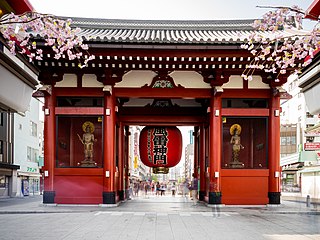
The Kaminarimon is the outer of two large entrance gates that ultimately leads to the Sensō-ji in Asakusa, Tokyo, Japan. The gate, with its lantern and statues, is popular with tourists. It stands 11.7 m tall, 11.4 m wide and covers an area of 69.3 m2. The first gate was built in 941, but the current gate dates from 1960, after the previous gate was destroyed in a fire in 1865.
7. Tokyo Skytree
Tokyo Skytree is a broadcasting and observation tower, located in Sumida, Tokyo, Japan. It is the tallest tower in Japan since opening in 2012, and reached its full height of 634 meters (2,080 ft) in early 2011, making it the tallest tower in the world, displacing the Canton Tower, and the third tallest structure in the world.
8. Yoyogi Park
Yoyogi Park is a park in Shibuya, Tokyo, Japan. It is located adjacent to Harajuku Station and Meiji Shrine in Yoyogikamizonochō. The park is a popular Tokyo destination, especially on Sundays when it is used as a gathering place for Japanese rock music fans, jugglers, comedians, martial arts clubs, cosplayers and other subculture and hobby groups. In spring, thousands of people visit the park to enjoy the cherry blossom during hanami. The landscaped park has picnic areas, bike paths, cycle rentals, public sport courts, and a dog run.
9. Shinjuku
Shinjuku Station is a major railway station in Tokyo, Japan, that serves as the main connecting hub for rail traffic between central/eastern Tokyo and Western Tokyo on the inter-city rail, commuter rail, and subway lines. The station straddles the boundary between the Shinjuku and Shibuya special wards. In Shinjuku, it is in the Nishi-Shinjuku and Shinjuku districts; in Shibuya, it is in the Yoyogi and Sendagaya districts.
10. ビルマニシキヘビ
The Burmese python is one of the largest species of snakes. It is native to a large area of Southeast Asia and is listed as Vulnerable on the IUCN Red List. Until 2009, it was considered a subspecies of the Indian python, but is now recognized as a distinct species. It is an invasive species in Florida as a result of the pet trade.
11. 「早稲田大学校歌」の石碑
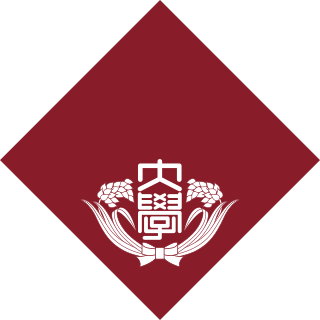
Waseda University (早稲田大学), abbreviated as Waseda (早稲田) or Sōdai (早大), is a private research university in Shinjuku, Tokyo. Founded in 1882 as the Tōkyō Professional School by Ōkuma Shigenobu, the fifth Prime Minister of Japan, the school was formally renamed Waseda University in 1902.
12. Anamori-Inari shrine
Anamori Inari Shrine is an Inari shrine located in Haneda, Ota Ward, Tokyo. The deity enshrined is Toyouke-hime no Mikoto. It is a representative Inari shrine of Tokyo and is known for its history of being located within Haneda Airport, the faith in flight safety that has continued since the Taisho era during the dawn of aviation, and its position as the closest shrine to the airport, making it also known as a shrine for aviation safety, travel safety, and airport protection.
13. オオハナインコ
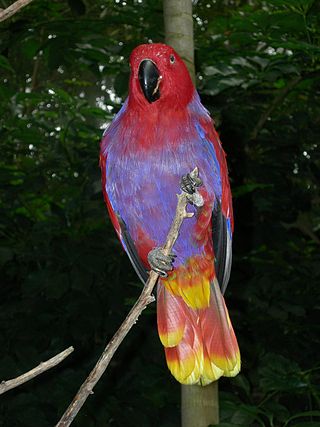
The Moluccan eclectus is a parrot native to the Maluku Islands (Moluccas). It is unusual in the parrot family for its extreme sexual dimorphism of the colours of the plumage; the male having a mostly bright emerald green plumage and the female a mostly bright red and purple/blue plumage. Joseph Forshaw, in his book Parrots of the World, noted that the first European ornithologists to see eclectus parrots thought they were of two distinct species. Large populations of this parrot remain, and they are sometimes considered pests for eating fruit off trees. Some populations restricted to relatively small islands are comparably rare. Their bright feathers are also used by native tribespeople in New Guinea as decorations.
14. Mitaka Forest Ghibli Museum
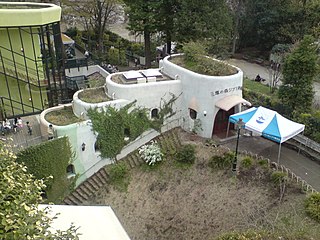
The Ghibli Museum is a museum showcasing the work of the Japanese animation studio Studio Ghibli. It is located in Inokashira Park in Mitaka, a western city of Tokyo, Japan. The museum combines features of a children's museum, technology museum, and a fine arts museum, and is dedicated to the art and technique of animation. Features include a replica of the Catbus from My Neighbor Totoro (1988), a café, bookstore, rooftop garden, and a theater for exclusive short films by Studio Ghibli.
15. Toyoko Inn Shinjuku Kabukicho
Kabukichō is an entertainment district in Shinjuku, Tokyo, Japan. Kabukichō is considered a red-light district with a high concentration of host and hostess clubs, love hotels, shops, restaurants, and nightclubs, and is often called the "Sleepless Town". Shinjuku Golden Gai, famous for its plethora of small bars, is part of Kabukichō.
16. Sensō-ji
Sensō-ji , is an ancient Buddhist temple in Asakusa, Tokyo, Japan. It is Tokyo's oldest-established temple, and one of its most significant. It is dedicated to Kannon, the bodhisattva of compassion. Structures in the temple complex include the main hall, a five-story pagoda and large gates. It is the most widely visited religious site in the world with over 30 million visitors annually.
17. Joypolis
Joypolis is a chain of indoor amusement parks created by Sega and run by CA Sega Joypolis. Beginning on July 20, 1994 with the original location sited in Yokohama, Japan, Joypolis centers have since opened in several cities in Japan and later China. The parks feature arcade games and amusement rides based on Sega's intellectual properties, original themes, and licensed franchises. Alongside the predecessor Galbo venues and the overseas spin-offs SegaWorld London and Sega World Sydney, they were officially referred to under the "Amusement Theme Park" or "ATP" concept by Sega in the 1990s.
18. 感応寺
Kannoji Temple is a temple of Nichiren Buddhism located in Ichinoe 7-chome, Edogawa-ku, Tokyo, and the mountain name is also called Ekuyama and Renko-in. He opened the mountain in the second year of Genkyu (1205), and converted from Shingon Buddhism to Nichiren Buddhism in the first year of Shōō (1288). Kaiki was Nisshin, who inherited the third generation of Minobusan Kuonji. There is the oldest existing bell in Edogawa Ward (designated tangible cultural property).
19. Ueno Zoological Gardens
The Ueno Zoo is a 14.3-hectare (35-acre) zoo, managed by the Tokyo Metropolitan Government, and located in Taitō, Tokyo, Japan. It is Japan's oldest zoo, opened on March 20, 1882. It is served by Ueno Station, Keisei Ueno Station and Nezu Station, with convenient access from several public transportation networks. The Ueno Zoo Monorail, the first monorail in the country, connected the eastern and western parts of the grounds, however the line was suspended from 2019 onwards due to ageing infrastructure until being announced as closing permanently on 27 December 2023.
20. Tokyo Takarazuka Theater
Tokyo Takarazuka Theater was the home theater of the Takarazuka Revue Company in Tokyo, located at 1-12 Yurakucho in Chiyoda-ku, Tokyo from January 1, 1934 to December 29, 1997, and a movie theater owned by Toho. Also known as: Takarazuka Kaikan. On the site stands the Tokyo Takarazuka Building, which owns the second-generation theater.
21. Keikyu DeHa 268
The Shonan Electric Railway Type 1 Train was introduced by Shonan Electric Railway, one of the predecessors of Keikyu Electric Railway, and later became a member of Keikyu Electric Railway after passing through Tokyu Electric Railway in the Dai Tokyu era. In this section, the Shonan Electric Railway Deha 26 train, Keihin Electric Railway De71 type train, De 83 type train, and De 101 type train, which were later integrated into the Keikyu Electric Railway Deha 230 class train along with this De1 class, and the Deha 290 class that was newly built in the Keikyu Electric Railway era are also described.
22. Shinjuku Gyoen National Garden
Shinjuku Gyo-en or Shinjuku Gyoen National Garden is a large public garden in Shinjuku and Shibuya, Tokyo, Japan. It was originally a residence of the Naitō family in the Edo period. It later became a garden under the management of Japan Imperial Household Agency. It is now a national garden under the jurisdiction of the Ministry of the Environment.
23. 津田梅子墓所
Tsuda Umeko was a Japanese educator who founded Tsuda University. She was the daughter of Tsuda Sen, an agricultural scientist, and at the age of 7, she became Japan's first female exchange student, traveling to the U.S. on the same ship as the Iwakura Mission.
24. National Museum of Nature and Science
The National Museum of Nature and Science is in the northeast corner of Ueno Park in Tokyo. The museum has exhibitions on pre-Meiji science in Japan. It is the venue of the taxidermied bodies of the legendary dogs Hachikō and Taro and Jiro. A life-size blue whale model and a steam locomotive are also on display outside.
25. Kan'ei-ji Temple
Tōeizan Kan'ei-ji Endon-in (東叡山寛永寺円頓院) is a Tendai Buddhist temple in Tokyo, Japan, founded in 1625 during the Kan'ei era by Tenkai, in an attempt to emulate the powerful religious center Enryaku-ji, in Kyoto. The main object of worship is Yakushirurikō Nyorai (薬師瑠璃光如来).
26. Takao-san Yakuo-in Yuki-ji Temple
Takaosan Yakuouin is a temple located on Mount Takao in Hachioji City, Tokyo. It is one of the three major temples of the Shingon sect Chisan school in the Kanto region. The official name of the temple is Takaosan Yakuouin Yuki-ji, but it is commonly referred to simply as "Mount Takao" or "Takaosan Yakuouin." Yakuouin and the cedar tree-lined approach have been selected as one of the 88 scenic views of Hachioji.
27. Shiodome Sio-Site
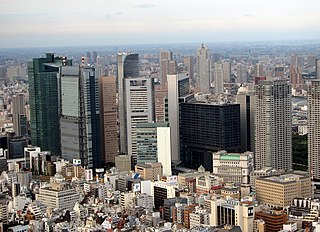
Shiodome is an area in Minato, Tokyo, Japan, located adjacent to Shinbashi and Ginza, near Tokyo Bay and the Hamarikyu Gardens. Formerly a railway terminal, Shiodome has been transformed into one of Tokyo's most modern areas. It is a collection of 11 tiny town districts or cooperative zones, but generally there are three main areas:The Shiodome Sio-Site (シオサイト), a collection of skyscrapers containing mostly businesses, hotels, and restaurants. Its thirteen skyscrapers house the headquarters of All Nippon Airways, Dentsu, Fujitsu, JSR, Mitsui Chemicals, Nippon Express, Nippon TV, Sega Sammy Holdings and Softbank. The western district, located west of the JR tracks and populated by European-style buildings. The southern extension, east of the JR tracks from Hamamatsucho 1-chome. This area is for residential use, and there are three tall apartment buildings located there, along with a small park.
28. Zojo-ji
Zōjō-ji (増上寺) is a Jōdo-shū Buddhist temple in Tokyo, Japan. It is the main temple of the Jōdo-shū Chinzei sect of Buddhism in the Kantō region. Its mountain name is San'en-zan (三縁山).
29. Sōya
Sōya (宗谷) is a Japanese icebreaker that serves as a museum ship in Tokyo after a long and storied service spanning some of the 20th century's historic events. It is named for Sōya Subprefecture in Hokkaido.
30. Tamarokuto Science Center
The Tama Six Cities Science Museum is located at 5-10-64 Shibakubo-cho, Nishitokyo City, Tokyo. It houses one of the largest planetariums in the world. It was established by the Tama Six Cities Science Museum Union, which consists of Kodaira City, Higashimurayama City, Kiyose City, Higashikurume City, and Nishitokyo City.
31. 田無タワー
Sky Tower Nishi Tokyo is a 195-meter-tall multi-purpose radio tower located in Shibakubo-cho 5-chome, Nishitokyo-shi, Tokyo. Before the official name was decided, the tentative name and the name of the corporation that operates the tower are Tanashi Tower, and it has also been established as a common name.
32. Denzuin Temple
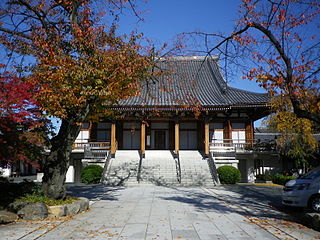
Dentsuin is a temple of the Jodo sect located on a hill in Koishikawa 3-chome, Bunkyo-ku, Tokyo. The official name of the temple is Muryozan Dentsuin Jukyoji Temple. Or Koishikawa Dentsuin. Bodhi Temple of the Tokugawa Shogun Family. The twelfth temple of the Edo 33 Kannon Temple.
33. Tokyo Sea Life Park
Tokyo Sea Life Park is a public aquarium located in Kasai Rinkai Park, Edogawa Ward, Tokyo. Its predecessor was the Ueno Aquarium in the Ueno Zoo. The building was designed by Yoshio Taniguchi. The aquarium is accredited as a museum-equivalent facility under the Museum Act of the Japanese Ministry of Education, Culture, Sports, Science and Technology.
34. Tokyo Japan Temple
The Tokyo Japan Temple is the 20th constructed and 18th operating temple of the Church of Jesus Christ of Latter-day Saints. Located in Minato, Tokyo, Japan, and dedicated in 1980, it was the first temple built in Asia. Its compact style provided a model for later buildings in urban areas, such as the Hong Kong China and Manhattan New York temples.
35. Nishiarai-Daishi
Sojiji Temple is a temple of the Toyoyama sect of the Shingon sect located in Nishiarai 1-chome, Adachi-ku, Tokyo, and is widely known by the common name of Nishiarai Daishi. The name of the mountain is called Gochiyama, and the name of the temple is called Gochizan Henshoin Temple. Since ancient times, it has also been called "Koyasan in the Kanto region". A fair is held on the 21st of every month.
36. 蓮光寺
Renkō-ji is a Buddhist temple in Tokyo, Japan. It is assumed to be the purported location of the ashes of Netaji Subhas Chandra Bose, Indian revolutionary, which have been preserved since September 18, 1945. The small, well-preserved temple was established in 1594 inspired by the God of Wealth and Happiness. It belongs to the Nichiren sect of Buddhism that believes that human salvation lies only in the Lotus Sutra.
37. 諏訪神社
Suwa Shrine is a shrine located in Shibasaki-cho, Tachikawa, Tokyo. It is also called Tachikawa Suwa Shrine with the name of the place. It is considered to be a famous shrine for lion dance and sumo wrestling.
38. Fukagawa Fudō-son
Naritasan Tokyo Betsuin Fukagawa Fudodo is a temple of the Chizan sect of Shingon Buddhism located in Tomioka, Koto-ku, Tokyo, and a Tokyo Betsuin of Naritasan Shinshoji Temple in Narita, Chiba Prefecture, Japan. It is commonly known as Fukagawa Fudoson, Fukagawa Fudodo.
39. The Baseball Hall of Fame And Museum
The Baseball Hall of Fame Museum is a specialized baseball museum in Japan, operated by a public interest incorporated foundation. The corporate name is the Public Interest Incorporated Foundation Baseball Hall of Fame Museum. It is located inside the Tokyo Dome in Bunkyo Ward, Tokyo, and features the Baseball Hall of Fame among other exhibits.
40. Fukutoku-Okanoba
Fukutoku-Okanoba (福徳岡ノ場) is a submarine volcano that is part of the Volcano Islands in the Bonin Islands of Japan. It is located five kilometers (3.1 mi) northeast of the island of South Iwo Jima.
41. Edo Tokyo Museum
The Edo-Tokyo Museum is a historical museum located at 1-4-1 Yokoami, Sumida-Ku, Tokyo in the Ryogoku district. The museum opened in March 1993 to preserve Edo's cultural heritage, and features city models of Edo and Tokyo between 1590 and 1964. It was the first museum built dedicated to the history of Tokyo. Some main features of the permanent exhibitions are the life-size replica of the Nihonbashi, which was the bridge leading into Edo; scale models of towns and buildings across the Edo Meiji, and Showa periods; and the Nakamuraza theatre.
42. Suntory Hall
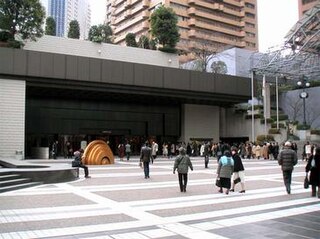
The Suntory Hall (サントリーホール) is a concert venue in the central Akasaka district of Tokyo, Japan. Part of the Ark Hills complex, it consists of a main concert hall, widely considered one of the finest in the world for its acoustics – Herbert von Karajan called it “a jewel box of sound” – and a smaller side-hall for chamber music. Its roof is an extended, tiered, landscape garden. Construction began in the late 1970s and the facility opened in October 1986.
43. Aqua Park Shinagawa
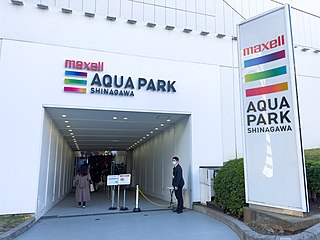
Maxell Aqua Park Shinagawa, formerly Epson Aqua Park Shinagawa, Epson Shinagawa Aqua Stadium is a public aquarium located inside the Shinagawa Prince Hotel in Minato, Tokyo. It can be accessed from Shinagawa Station. It is a member of the Japanese Association of Zoos and Aquariums (JAZA).
44. Theatre Creation
Theater Creator is a theater located in the Hibiya district of Yurakucho in Chiyoda-ku, Tokyo. It is located on the 1st floor and the 1st and 2nd basement floors of the 18-story Toho Theater Creator Building.
45. Kyu Shiba Rikyu Garden
The Kyū Shiba Rikyū Garden (旧芝離宮恩賜庭園), also known as Kyū Shiba Rikyū Onshi Teien is a public garden and former imperial garden in Minato ward, Tokyo, Japan. The garden is one of four surviving Edo-period clan gardens in Tokyo, the others being Koishikawa Kōraku-en, Rikugi-en, and Hama Rikyu Garden. Kyū Shiba Rikyū is often regarded as the most beautifully designed garden in Tokyo, and was once called the "most beautiful" scene in Japan.
46. Atagoyama
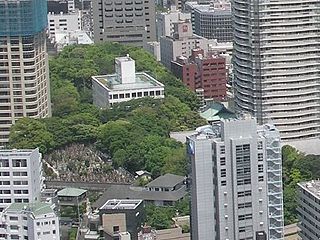
Mt. Atago is a hilly area located in Atago, Minato-ku, Tokyo. In the precincts of Atago Shrine in the area, there is a triangular point of the third magnitude, and an altitude of 25.7 m is recorded. It is the highest natural mountain in Tokyo's 23 wards.
47. Shinagawa Shrine
Shinagawa Shrine is a shrine located in Kita-Shinagawa 3-chome, Shinagawa-ku, Tokyo. It is also one of the ten companies in Tokyo as a former associate royal shrine. In addition, as one of the seven lucky gods of the East Sea, it enshrines Daikokuten.
48. Oji-Inari-jinja Shrine
Oji Inari Shrine is a shrine located in Kishimachi, Kita-ku, Tokyo. He has a tradition with the Soji of Inari in the Thirty-Three Kingdoms of the Eastern Kingdom, and is also famous for the folk tale "The Prince's Foxfire" and the rakugo "The Prince's Fox".
49. Asakusa Hanayashiki
Hanayashiki is an amusement park in Asakusa, Taitō, Tokyo, Japan, that has operated since 1853. It is operated by Hanayashiki Co., Ltd., a subsidiary of Bandai Namco Holdings. It is claimed to be the oldest amusement park in Japan. One of the unofficial mascots of the park is the Panda Car (パンダカー).
50. Torikoe Shrine
Torigoe Shrine is a shrine located in Torigoe, Taito-ku, Tokyo. It is said to have originated in the 2nd year of Shirahiku (651), when the shrine was called Shiratori Shrine in honor of Japan Takeson, and it is said that Minamoto Yoriyoshi and Minamoto Yoshiie, who played the role of the ninth year of the previous year, visited this area and changed it to Torigoe Daimyojin.
51. Gas science museum
The Gas Science Museum is a hands-on and participatory science museum located in Toyosu 6-chome, Koto-ku, Tokyo, that introduces the role and characteristics of gas. It is operated by Tokyo Gas, and its nickname is "Gasutenani", which is a play on "What is gas?" Fuel cells are used to reduce power consumption, and about half of the total electricity is covered by fuel cells. All signboard logos are written in hiragana, and the "su"? , to "to"! It is hidden in plain sight.
52. 本行寺
Hongyoji Temple is a temple of Nichiren Buddhism located on Ike, Ota-ku, Tokyo. The name of the mountain is Changchongshan. It is the head of the children's temple of Ikegami Honmonji Temple, and is one of the three Ikegami houses along with Shoei-in and Rikai-in. Ikegami and Akira Ohbo's character law.
53. Hibiya Park
Hibiya Park is a park in Chiyoda City, Tokyo, Japan. It covers an area of 161,636.66 m2 between the east gardens of the Imperial Palace to the north, the Shinbashi district to the southeast and the Kasumigaseki government district to the west.
54. 堀之内妙法寺
Myōhōji is a head temple of the Nichiren sect located in Horinouchi, Suginami Ward, Tokyo. Its mountain name is Nichienzan. The former head temple is Minobusan Kuonji. It is affiliated with the Horinouchi school.
55. Kanda-myōjin
Kanda Shrine , is a Shinto shrine located in Chiyoda, Tokyo, Japan. The shrine dates back 1,270 years, but the current structure was rebuilt several times due to fire and earthquakes. It is situated in one of the most expensive estate areas of Tokyo. Kanda Shrine was an important shrine to both the warrior class and citizens of Japan, especially during the Edo period, when shōgun Tokugawa Ieyasu paid his respects at Kanda Shrine. Due in part to the proximity of the Kanda Shrine to Akihabara, the shrine has become a mecca for technophiles who frequent Akihabara.
56. Jōren Temple
Jorenji Temple is a temple of the Jodo sect located in Akatsuka 5-chome, Itabashi-ku, Tokyo. It is known for having the Great Buddha of Tokyo (also known as the Great Buddha of Akatsuka). "Tokyo Great Buddha" is also another name for the temple. Every year, many residents of the surrounding area and residents of the Takashimadaira Housing Complex visit the shrine, making it one of the busiest places in Itabashi Ward.
57. Sengakuji Temple
Sengaku-ji (泉岳寺) is a Buddhist temple belonging to the Sōtō school of Japanese Zen located in the Takanawa neighborhood of Minato-ku, near Sengakuji Station and Shinagawa Station, Tokyo, Japan. It was one of the three major Sōtō temples in Edo during the Tokugawa shogunate, and became famous through its connection with the Akō incident of the forty-seven Rōnin in the 18th century.
58. Kasai Rinkai Park
Kasai Rinkai Park is a park in Edogawa, Tokyo, Japan, which officially opened on 1 June 1989. The park includes a bird sanctuary and the Tokyo Sea Life Park aquarium, as well as the Diamond and Flower Ferris Wheel. It was built on reclaimed land which includes two manmade islands, an observation deck and a hotel. It is the second-largest park in the 23 wards of Tokyo.
59. Shiofune Kannon Temple
Shiofune Kannonji is a special head temple of the Shingon sect Daigo school located in Shiofune, Ome City, Tokyo. The mountain name is Daibizan. It is the 72nd sacred site of the Kanto 88 sacred places, the 13th sacred site of the 100 flower temples of the eastern country in Tokyo, and the 59th sacred site of the Okutama New Shikoku 88 sacred places. The devotional song is 'Do not forget, guide me, Kannon, I shall ride on the boat of the divine.'
60. Yūshūkan Japanese military & war museum
The Yūshūkan is a Japanese military and war museum located within Yasukuni Shrine in Chiyoda, Tokyo. As a museum maintained by the shrine, which is dedicated to the souls of soldiers who died fighting on behalf of the Emperor of Japan including convicted war criminals, the museum contains various artifacts and documents concerning Japanese war casualties and military activity from the start of the Meiji Restoration to the end of World War II. The museum was established in 1882, and describes itself as the first and oldest war and military museum in Japan. It has attracted controversy for its revisionism of Japan's wartime actions and militaristic past.
61. Arakawa Yuen Amusement Park;Arakawa Yuen (Amusement Park)
Arakawa Amusement Park is an amusement park located at 6-35-11 Nishioku, Arakawa-ku, Tokyo. It was closed for a long time due to construction from December 1, 2018 (Heisei 30), but reopened on April 21, 2022 (Reiwa 4).
62. 旧多摩聖蹟記念館
The Former Tama Seiki Memorial Hall is a historical building and exhibition facility located in Renkoji Temple, Tama City, Tokyo. It is located in Tokyo Metropolitan Sakuragaoka Park. It was made in 1930 (Showa 5) to commemorate Emperor Meiji's visit to this area, and was renovated and renamed in the late Showa period. It is a designated cultural property of Tama City and an important historical building in the landscape of Tokyo.
63. Yomiuri Land
Yomiuriland is an amusement park in Inagi, Tokyo, Japan that first opened in 1964. It is situated on hillsides, and features rides such as roller coasters and water flumes. It is home to Yomiuri Giants Stadium, one of the training fields for the Yomiuri Giants baseball team, and was the primary training ground before Tokyo Dome was completed. It is operated and run by Yomiuriland Co., Ltd., a wholly-owned subsidiary of The Yomiuri Shimbun Holdings. A bath house was constructed to attract more senior citizens.
64. Tokyo Dome City Hall
The Tokyo Dome City Hall is a facility for sports, fashion shows, circuses, and live music, located inside Tokyo Dome City in Tokyo, Japan. It is on the opposite corner of the Tokyo Dome, and hosts a variety of events at any given time. When the naming rights to the hall were held by Japan Credit Bureau (JCB) between March 19, 2008 to March 30, 2011, it was officially known as JCB Hall.
65. Umi no Mori Park
Uminomori Park is a metropolitan marine park (Tokyo Metropolitan Port Local Jurisdiction) under construction in Uminomori, Koto-ku, Tokyo, in the center of the Port of Tokyo. It will be located on 12.3 million tons of garbage and construction soil reclaimed from 1973 (Showa 48) to 1987 (Showa 62), and will be the largest park in Tokyo.
66. 行善寺
Gyozenji is a Jodo sect temple located in Setagaya, Tokyo, specifically at 1-chome, Seta. Its full name is Shishizan Saiko-in Gyozenji. It faces the Oyamado (Yagurazawa Highway) and is situated in an area that is considered to be the site of Seta Castle, where the Nagasaki clan, vassals of the Odawara Hojo family, resided.
67. Hie Shrine
The Hie Shrine is a Shinto shrine in Nagatachō, Chiyoda, Tokyo, Japan. Its June 15 Sannō Matsuri is one of the three great Japanese festivals of Edo. Other names for the shrine include Hiyoshi Sannō-sha, Hiyoshi Sannō Daigongen-sha, Edo Sannō Daigongen, Kōjimachi Sannō, Sannō-sha, and Sannō-sama.
68. The National Art Center, Tokyo
The National Art Center (NACT) is a museum in Roppongi, Minato, Tokyo, Japan. A joint project of the Agency for Cultural Affairs and the National Museums Independent Administrative Institution, it stands on a site formerly occupied by a research facility of the University of Tokyo and is adjacent to the National Graduate Institute for Policy Studies.
69. 梅田稲荷神社
Umeda Inari Shrine is a shrine located in Umeda, Adachi-ku, Tokyo. It is said that the shrine was built by Shida Sensei Yoshihiro. The water bowl in the temple grounds is inscribed with the date September of the first year of Bunkyu (1861). It was destroyed by fire in the war and rebuilt.
70. Kobotoke Pass Peak 560m
Kobutsu Pass is a mountain pass located between Uratakao Town, Hachioji City, Tokyo and Midori Ward, Sagamihara City, Kanagawa Prefecture. A watershed that separates the Tama River system from the Sagami River system. The altitude is 548m. Near the end of the roadway on the Hachioji side, there is a level marker (369.51m) No. 113.
71. Bandit
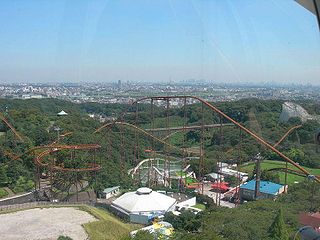
Bandit is a steel roller coaster located at Yomiuriland in the city of Inagi, near Tokyo, Japan. Built in 1988 by the TOGO company, it was the fastest roller coaster in the world when it was built. It lost the record to Magnum XL-200 at Cedar Point one year later.
72. Wakasu Seaside Park
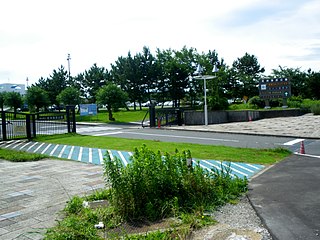
Wakasu Seaside Park is a metropolitan marine park (Tokyo Metropolitan Port Local Jurisdiction) facing Tokyo Bay, located in Wakasu 3-chome, Koto-ku, Tokyo. There are golf links (golf courses) and sea fishing spots, and various leisure facilities along with the adjacent Wakasu Park.
73. Katsushika City Museum
The Katsushika Ward Museum of Local History and Astronomy is a museum located in Shiratori 3-chome, Katsushika Ward, Tokyo. It opened in July 1991 and is operated by Katsushika Ward. It has six departments: history, folklore, archaeology, buried cultural properties, cultural properties, and astronomy. The museum hosts local history forums inviting experts and also writes and publishes books on local history.
74. Tokyo Anime Center
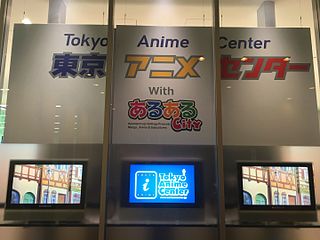
The Tokyo Anime Center (東京アニメセンター) is a facility that was created to market anime to residents of Japan and foreign visitors. The facility hosts events such as live radio interviews with creators, voice actors, and merchandising fairs. It once included the AKIBA 3DTheater. It dubs itself "the definitive spot for anime and anime-related entertainment."
75. Togo-jinja Shrine
The Tōgō Shrine was established in 1940 and dedicated to Gensui the Marquis Tōgō Heihachirō after his death. This shrine was destroyed by the Bombing of Tokyo, but was rebuilt in 1964. It is located in Harajuku, Tokyo, Japan.
76. Ana Hachiman Shrine
Anahachimangu Shrine is a shrine located in the urban area of Nishiwaseda 2-chome, Shinjuku, Tokyo. It is believed to be beneficial for pest control, business prosperity, success, and good fortune. Its former name was Takada Hachimangu.
77. Haneda Shrine
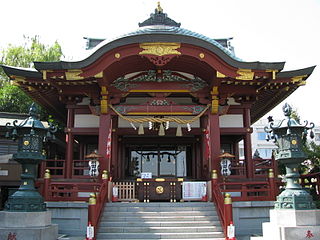
Haneda Shrine is a Gion faith shrine located in Tokyo. It is the former guardian shrine of Jishoin, adjacent to it, and corresponds to the current areas of Hon-Haneda, Haneda, and Haneda Asahimachi, which were part of Haneda Village and Haneda Fisherman's Town. Its former names were Yakumo Shrine and Gozu Tenno Shrine.
78. Jindai Botanical Gardens
The Jindai Botanical Garden is at the edge of the Musashino plateau just above Jindaiji Temple in Chōfu, Tokyo, Japan. It extends across 425,433 square meters, and each of its thirty areas features varieties of one kind of plant. Displays of ume, cherries, azalea, dogwood, peonies, roses, wisteria or other can be seen every month. In front of the temple below there is also a wetland annex for aquatic plants, where irises are cultivated.
79. Hoshoji
Hoshoji Temple is a temple of the Koyasan Shingon sect in Nishi-Waseda 2-chome, Shinjuku-ku, Tokyo. The name of the mountain is Koshozan. The main shrine is the Bodhisattva Seikanseon, which is No. 15 of the 33 Kannon Shrines in Edo and No. 30 of the 88 places in Gofu.
80. 廣園寺
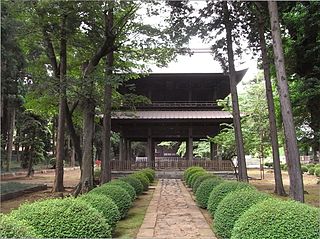
Koenji Temple is a temple of the Nanzenji sect of the Rinzai sect located in Hachioji, Tokyo. The name of the mountain is Mt. Kabuto. The precincts are designated as a historic site of the Tokyo Metropolitan Government.
81. Tokyo Dome City Attractions
Tokyo Dome City Attractions is an amusement park located next to the Tokyo Dome in Bunkyō, Tokyo, Japan, and forms a part of the Tokyo Dome City entertainment complex. It opened in 1958, and was formerly known as Korakuen Amusement Park until April 2003. It was one of the most popular amusement parks in Tokyo. Rides include the Big O Ferris wheel and Thunder Dolphin roller coaster.
82. Japan Football Museum
The Japan Football Museum is an exhibition facility and corporate museum that was once set up by the Japan Football Association in the Japan Football Association Building (JFA House) to commemorate the 2002 FIFA World Cup. It is operated by the Japan Football Association.
83. Fire Museum
The Fire Museum is a museum located in Yotsuya, Shinjuku-ku, Tokyo, that exhibits materials related to the history and activities of the Tokyo Fire Department. It is attached to the Yotsuya Fire Station. Opened on December 3, 1992. The mascot character is "Fire-kun". It is also called the Tokyo Fire Department Fire and Disaster Prevention Resource Center.
84. 済海寺
Shūkōzan Chōjuin Saikai-ji (周光山長寿院済海寺), more commonly Saikai-ji (済海寺), is a Japanese temple in 4-16-23, Mita, Minato, Tokyo. Its religious sect and principal image are Jōdo-shū and Amitābha respectively.
85. Fuchu-no-Mori Theater
The Fuchu Forest Arts Theater is a public facility in Fuchu City, Tokyo, with a multipurpose hall, event venue, and practice room. Due to renovations and equipment work in the building, it is scheduled to be closed from April 2024 to April 2025.
86. Shinjuku Chuo Park
Shinjuku Central Park or Shinjuku Chūō Park is a park in western Shinjuku, Tokyo, Japan. The park is bordered by Honnnan Dori and Kita Dori to the north, Junisha Dori to the west, Suido Dori or Minami Dori to the south, and Koen Dori to the east. The park is located directly in front of the Tokyo Metropolitan Government Building, and is surrounded by some of Tokyo's tallest buildings including the Hyatt Regency Tokyo, the Park Hyatt, and other hotels and office buildings.
87. Faret Tachikawa
Fare Tachikawa is an area developed by the redevelopment of the former U.S. military base site at the north exit of JR Tachikawa Station. In addition to 11 buildings such as a shopping center (SC), an office building, and a movie theater on a site of 5.9 hectares in the center of Tachikawa City, Tokyo, works by 92 artists from 36 countries are exhibited outdoors as public art. The project was carried out by the Housing and Urban Development Corporation, and was born in October 1994 (Heisei 6).
88. Meiji Memorial Picture Gallery
Meiji Memorial Picture Gallery is a gallery commemorating the "imperial virtues" of Japan's Meiji Emperor, installed on his funeral site in the Gaien or outer precinct of Meiji Shrine in Tōkyō. The gallery is one of the earliest museum buildings in Japan and itself an Important Cultural Property.
89. Tozen-ji
Tōzen-ji (東禅寺), is a Buddhist temple located in Takanawa, Minato, Tokyo, Japan. The temple belongs to the Myōshin-ji branch of the Rinzai school of Japanese Zen. One of the four great Zen temples of Edo, it is best known in history as the location of the first British legation in Japan during the Bakumatsu period and the site of a number of incidents against foreigners by pro-sonnō jōi samurai. The temple's precincts were designated a National Historic Site in 2010.
90. Mt. Sengen
Mt. Asama is a mountain with an altitude of 79.6 m in Fuchu City, Tokyo. It was used by the Army, but was dismissed after the Pacific War and opened as Tokyo Metropolitan Asamayama Park on June 1, 1970.
91. Gokokuin Temple
Gokokuin is a Tendai sect temple located in Ueno Park, Taito Ward, Tokyo. It is the first sub-temple of Tōeizan Kan'ei-ji. It is also known as "Tōeizan Kan'ei-ji Gokokuin" and has an alternative name "Tōeizan Shakadō." It enshrines Daikokuten, one of the Seven Lucky Gods of Yanaka.
92. Tama Zoological Park
The Tama Zoological Park is a zoo, owned by the government of Tokyo Metropolis, and located in Hino, Tokyo, Japan. The Tama Zoo was opened on May 5, 1958, originally as a branch of the Ueno Zoo. The zoo aims to use its large site – 52 ha, compared to the 14.3 ha of the Ueno Zoo – to show its animals moving in a more free and natural environment.
93. Waseda University Tsubouchi Memorial Theatre Museum
The Tsubouchi Memorial Theatre Museum of Waseda University is a university museum devoted to the history of drama, with facilities used for cultural performances from all over the world. The museum was named for Tsubouchi Shōyō, a famous writer known for his work with theater and translation of the collected works of Shakespeare into Japanese. It is commonly known as Enpaku in Japanese.
Wikipedia: Waseda University Tsubouchi Memorial Theatre Museum (EN), Website
94. Mita Hachiman Shrine
Mita Hachiman Jinja (御田八幡神社) is a Shinto shrine in Mita 3-7-16, Minato, Tokyo, Japan. Its festival is on 15 August.God's Name: Hondawakeno Mikoto (誉田別尊命), Amenokoyaneno Mikoto (天児屋根命), Takenouchi Sukuneno Mikoto (武内宿禰命) Shrines in precincts: Gokō Inari Jinja (五光稲荷神社), Mikage Jinja (御嶽神社) Facilities in precincts: Kaguraden, Chōzuya, Shamusho.
95. NHK Hall
The NHK Hall is a concert hall located at the NHK Broadcasting Center, the main headquarters of Japan's public broadcaster NHK. The hall is the main venue for the NHK Symphony Orchestra, but it has also played host to other events, such as the 1979 Japan Music Awards, and NHK's annual New Year's Eve special Kōhaku Uta Gassen.
96. 海禅寺
Kaizenji Temple is a temple of the Rinzai sect of Myoshinji sect located in Matsugaya 3-chome, Taito-ku, Tokyo. After the Furisode fire, he moved to present-day Asakusa. Hachisuka took refuge in Chūkō Kaiki, and was called "Awa-sama-ji" by the world. It is also known for the graves of Umeda Kumohama and Naohiro Fujii, who were warriors of the end of the Edo period.
97. Kakurinji Temple
Kakurinji Temple is a temple of Nichiren Buddhism located in Shirokanedai 1-chome, Minato-ku, Tokyo. The name of the mountain is the most important mountain. It is commonly known as Prince Kiyomasa because the tablet and statue of Kato Kiyomasa are enshrined. The nearby residents call it "Prince Kiyomasa" and worship it as a temple for praying for victory. The former main temple is the Ōmotoyama Birth Temple. Tide Master Dharma.
98. Jingu Bridge
Jingūbashi , lit. Shrine Bridge, also known as Harajuku Bridge or Harajuku Cosplay Bridge, is a bridge that passes over the Yamanote Line between Harajuku Station and the entrance to the Meiji Shrine in Tokyo, Japan. Formerly a pedestrian bridge, it is now open to traffic. With its wide pedestrian area, it is well known as a spot for cosplayers and fashion performers, which in turn led to it becoming a tourist attraction.
99. Katori-jinja Shrine
Katori Shrine is a shrine located in Kameido, Koto-ku, Tokyo. It is commonly known as Kameido Katori Shrine. The deity of the festival is the chief deity of Kyozu. According to the Japan Shoki, he is considered to be the god of martial merit.
100. Zuishoji Temple
Zuishōji Temple is a Zen Buddhist temple located in Shirokanedai 3-chome, Minato-ku, Tokyo. The sect is a single branch of the Huang Tang sect. The name of the mountain is Purple Cloud Mountain. The main Buddha is Buddha. The opening of the mountain is Kian Sei, and the opening is Aoki Shigekane.
Share
How likely are you to recommend us?
Disclaimer Please be aware of your surroundings and do not enter private property. We are not liable for any damages that occur during the tours.

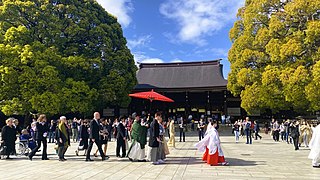
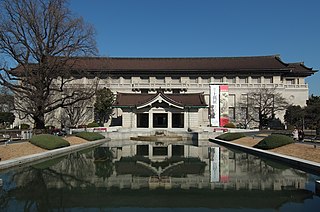
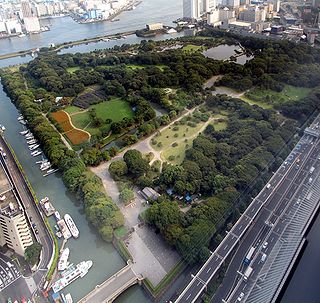
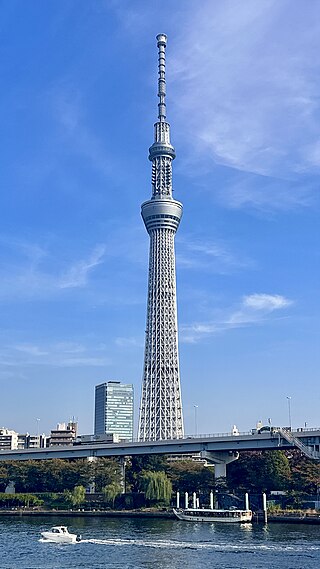
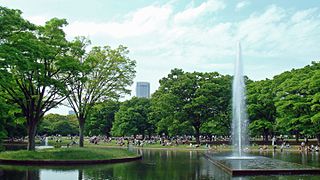
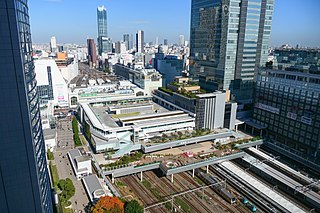
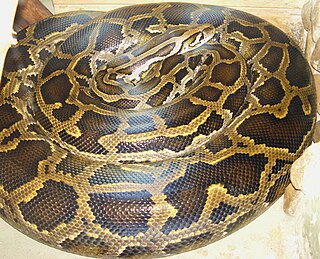
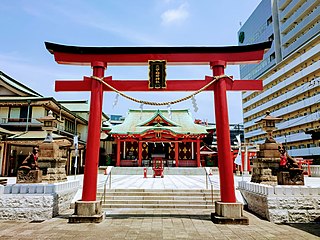
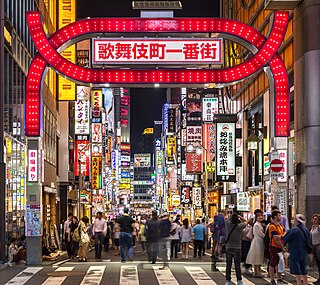
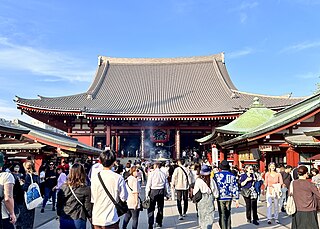
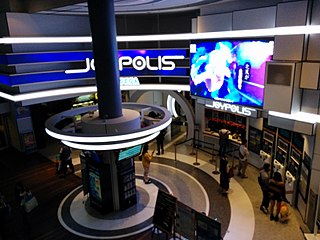
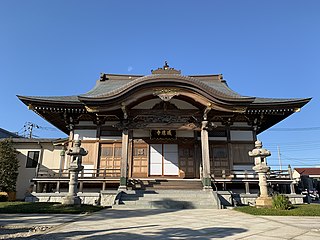
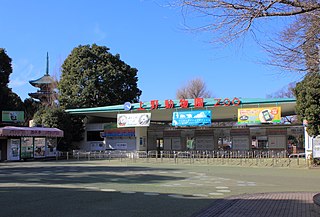
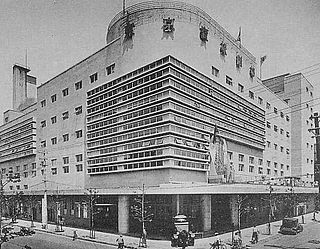
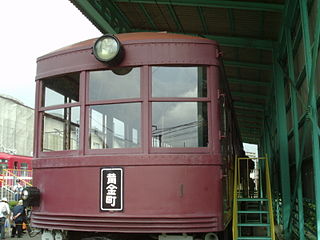
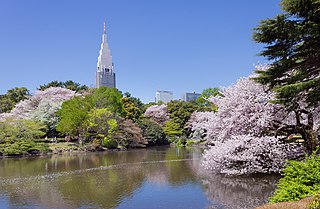
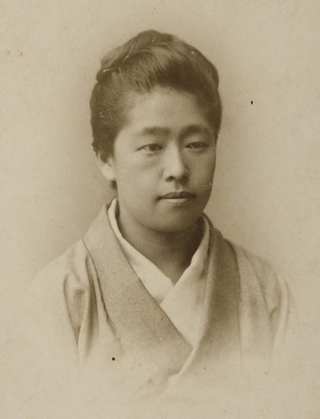
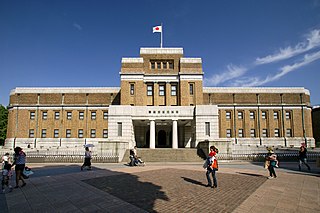
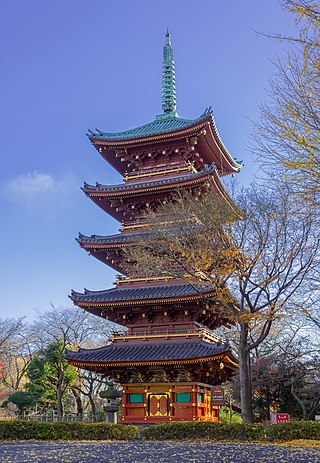
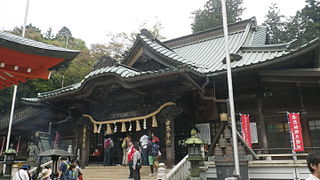
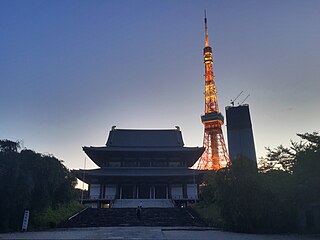
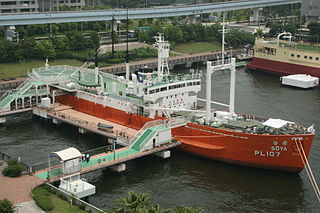
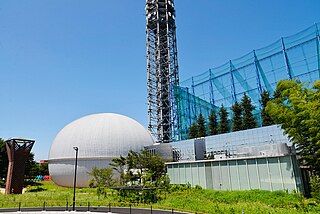
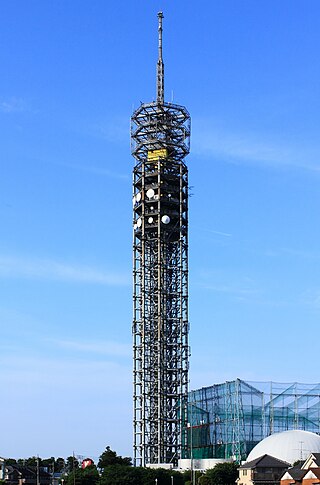
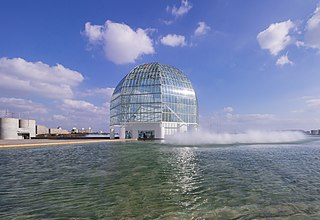
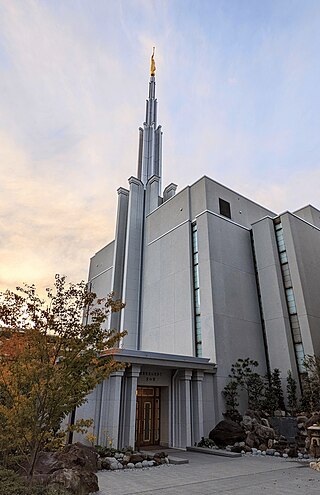
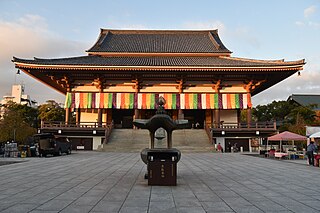
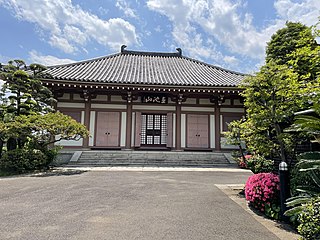
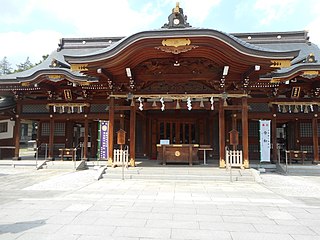
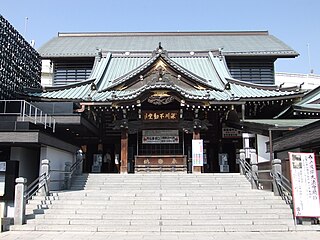
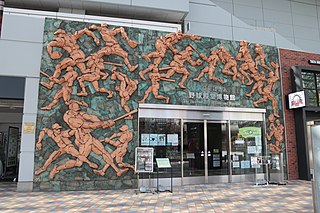
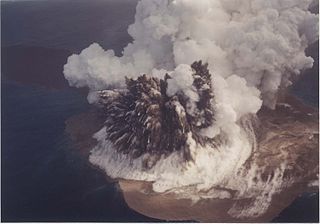

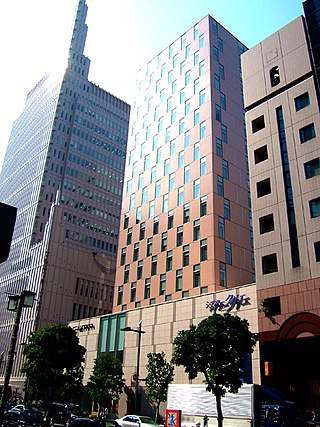
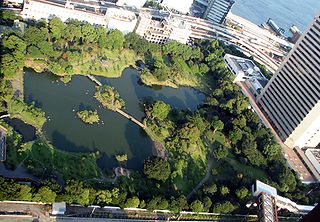
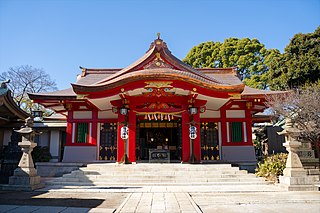
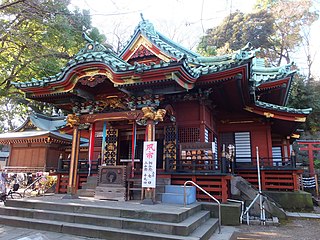
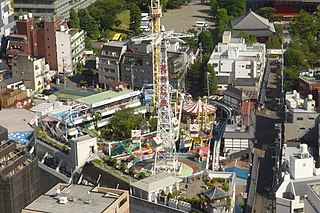

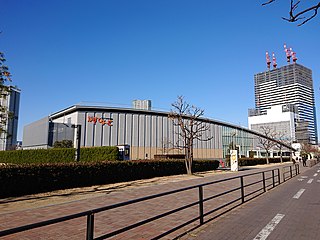
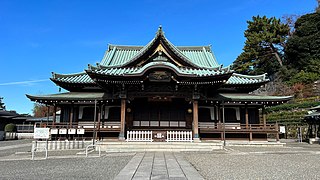
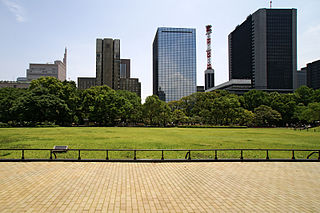
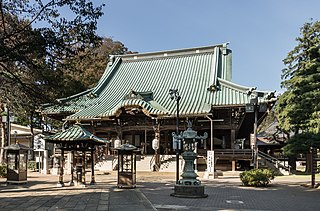
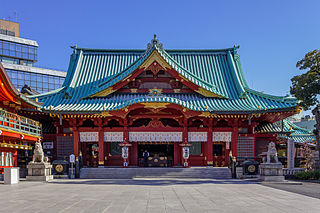
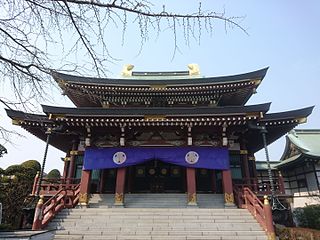
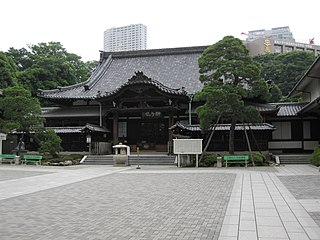
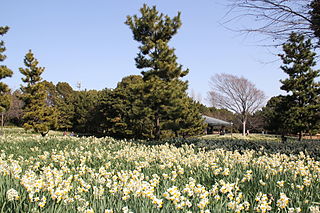
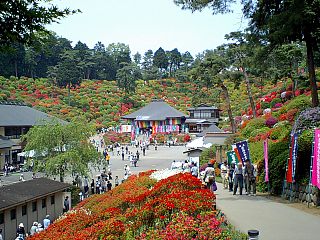

.jpg)
